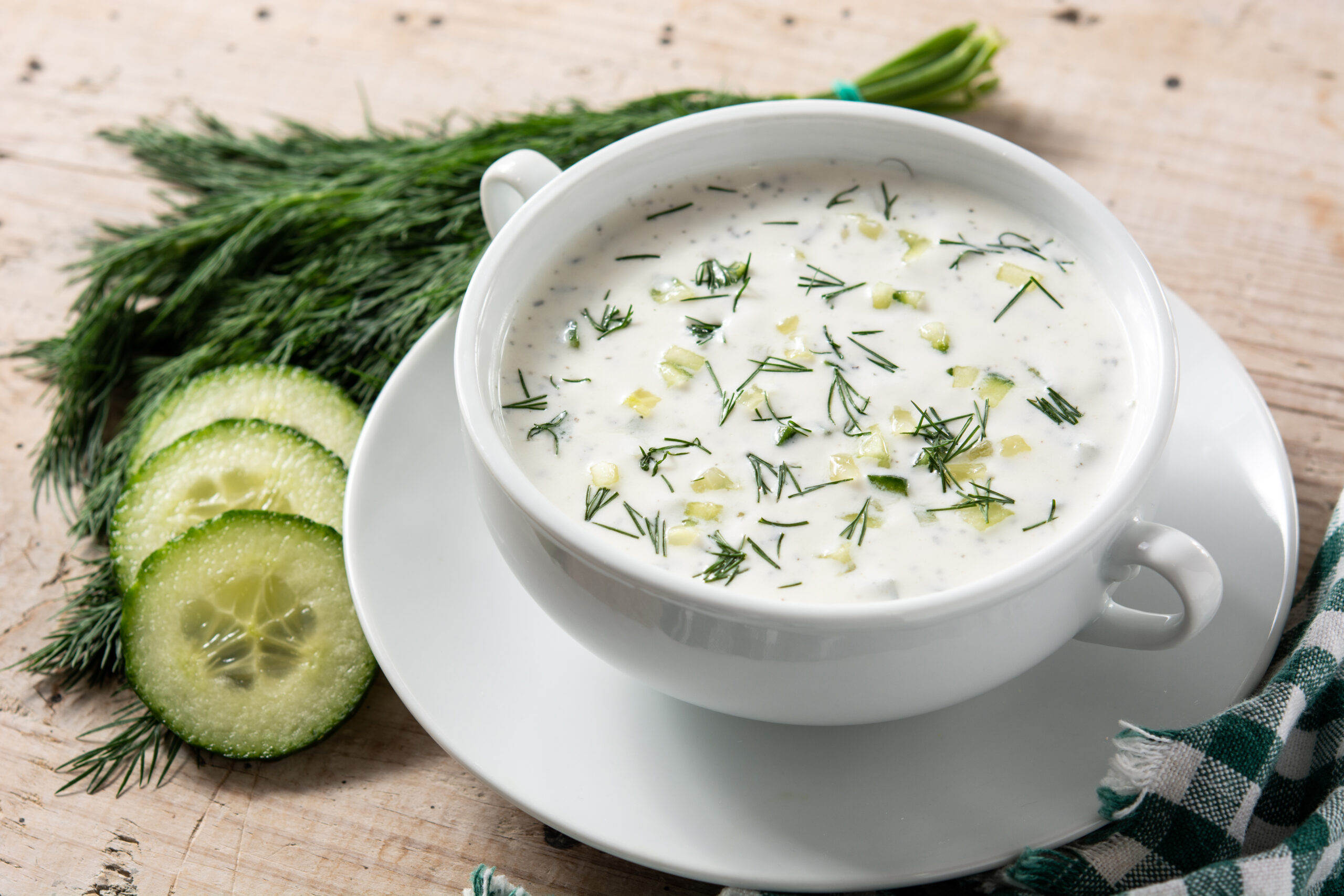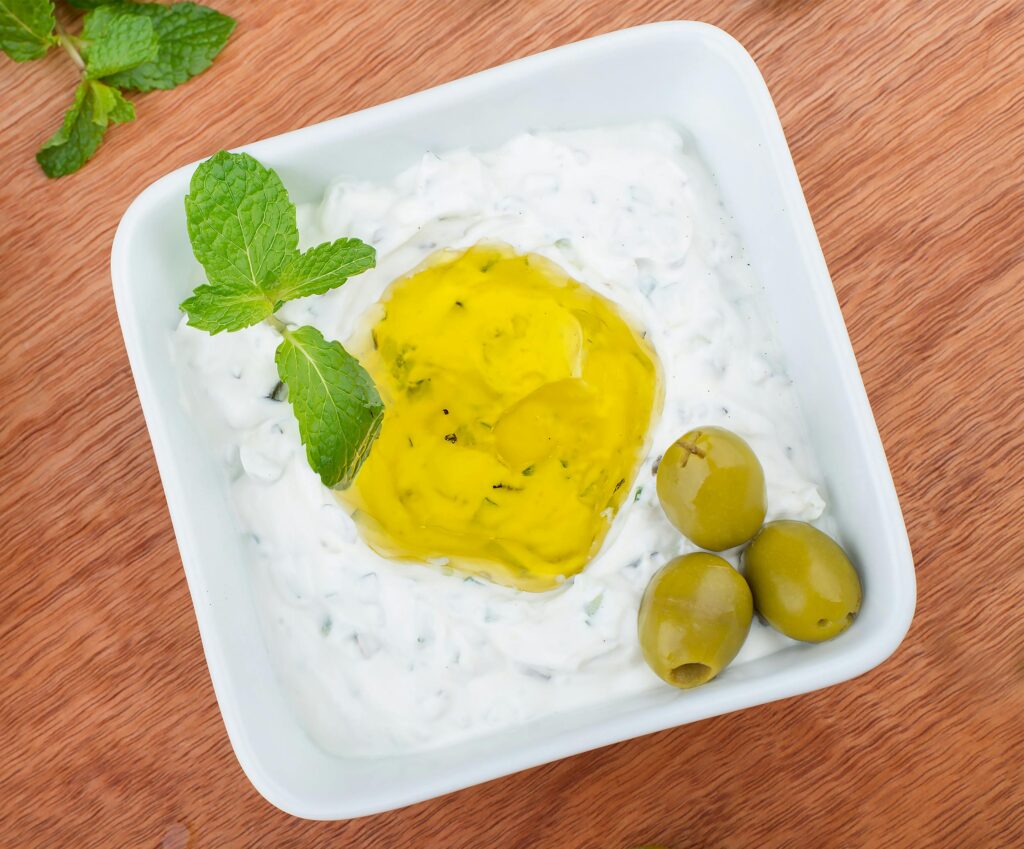- LIFE
Chocolate Zucchini Brownies Perfect for Every Occasion


Tzatziki sauce, a staple of Greek cuisine, is a creamy, tangy condiment that elevates a wide range of dishes with its refreshing flavor. Made primarily with Greek yogurt, cucumbers, garlic, and herbs, this versatile sauce has found its place in kitchens around the world. Whether you’re a seasoned home cook or a food enthusiast eager to explore new recipes, tzatziki offers a delightful journey into Mediterranean flavors. This article delves into the nuances of tzatziki sauce, from traditional recipes to modern twists, ensuring you can master this classic with confidence.
The flavor of tzatziki sauce is a harmonious blend of creamy, tangy, and savory notes. The Greek yogurt provides a rich and smooth base, while the cucumbers add a refreshing crunch. Garlic infuses the sauce with a robust savory depth, and the addition of fresh herbs like dill or mint enhances its aromatic qualities. This balance of flavors makes tzatziki an ideal accompaniment to a variety of dishes, offering a cool contrast to spicy or grilled foods.
To create an authentic Greek tzatziki, it’s crucial to use the right ingredients. The foundation is Greek yogurt, known for its thick and creamy texture. Cucumbers, preferably seedless varieties like English or Persian, are grated and drained to remove excess moisture. Fresh garlic cloves, finely minced, add a pungent kick, while extra virgin olive oil enriches the sauce’s texture. Fresh dill is the traditional herb of choice, though mint can also be used for a different flavor profile. A splash of lemon juice or vinegar provides acidity, enhancing the yogurt’s tanginess.
For those with dietary restrictions, several substitutions can be made without compromising the sauce’s integrity. For a dairy-free version, swap Greek yogurt with a coconut or almond-based yogurt alternative. If garlic is too overpowering, shallots offer a milder substitute. Additionally, for a low-fat option, use low-fat Greek yogurt, which still maintains a creamy consistency.

Creating a classic Greek tzatziki sauce is straightforward and rewarding. Follow this step-by-step method to achieve the perfect balance of flavors:
For those seeking a vegan alternative, tzatziki can be easily adapted while retaining its signature taste and texture. Here’s a simple vegan tzatziki recipe:
While tzatziki is widely associated with Greece, variations of this sauce can be found across the Mediterranean, each reflecting local tastes and ingredients. In Turkey, a similar sauce called “cacık” is often thinner and may include additional ingredients like mint and walnuts. The Middle Eastern version, known as “tarator,” might incorporate tahini for a nutty flavor twist. These regional adaptations showcase the sauce’s versatility and the diverse culinary traditions of the Mediterranean.
Experimenting with herbs and spices can transform traditional tzatziki into a signature creation. Consider adding a pinch of smoked paprika for a subtle smoky depth or a dash of cumin for a warm, earthy flavor. Fresh herbs like parsley or cilantro can substitute or complement dill, offering a fresh twist. These innovative spins allow you to tailor the sauce to your personal taste preferences and culinary creations.

Tzatziki is a versatile sauce that pairs well with a variety of dishes. It is traditionally served as a dip with pita bread or fresh vegetables. As a condiment, it complements grilled meats such as lamb, chicken, or beef kebabs, providing a refreshing contrast to the savory flavors. Tzatziki can also be used as a spread in sandwiches or wraps, adding a creamy layer to enhance the overall taste. For a light meal, serve tzatziki alongside roasted vegetables or as a topping for baked potatoes.
Even experienced cooks can encounter challenges when making tzatziki. One common mistake is not draining the cucumber thoroughly, which can result in a watery sauce. To fix this, ensure you squeeze out as much liquid as possible before mixing. Another issue is overpowering garlic, which can be mitigated by starting with a smaller amount and adjusting to taste. If the sauce is too thick, a splash of water or lemon juice can help achieve the desired consistency. Lastly, always taste and adjust seasoning before serving to ensure a balanced flavor.
Proper storage is essential to maintain the freshness and flavor of tzatziki. Store the sauce in an airtight container in the refrigerator, where it will keep for up to four days. If you need to prepare it ahead of time, make sure to stir well before serving, as some separation may occur. Freezing tzatziki is not recommended, as the texture of the yogurt and cucumbers may change upon thawing, resulting in a less desirable consistency.
For those in a hurry, a quick tzatziki can be made with just a few ingredients and minimal preparation time. Here’s how:
To maximize tzatziki’s potential, pair it thoughtfully with dishes that complement its flavors. It’s an ideal match for Mediterranean-inspired meals, such as Greek salads, falafel, or gyros. For a fusion twist, try serving tzatziki with spicy dishes like curry or chili, where its cooling properties can balance heat. Additionally, tzatziki can be a delightful topping for grilled fish, enhancing the dish with its zesty and refreshing profile.
Incorporating high-quality extra virgin olive oil can elevate the flavor of tzatziki, adding richness and a subtle fruity note. Drizzle a little olive oil on top of the finished sauce before serving, or mix it in with the other ingredients for a smoother texture. This simple addition not only enhances the taste but also pays homage to the sauce’s Mediterranean roots, where olive oil is a staple ingredient.
Leftover tzatziki doesn’t have to go to waste. Use it as a flavorful salad dressing by thinning it with a bit of water or lemon juice. It can also serve as a marinade for chicken or lamb, imbuing the meat with its tangy and aromatic qualities. For a unique twist, incorporate tzatziki into a pasta salad, combining it with fresh vegetables and feta cheese for a refreshing side dish.